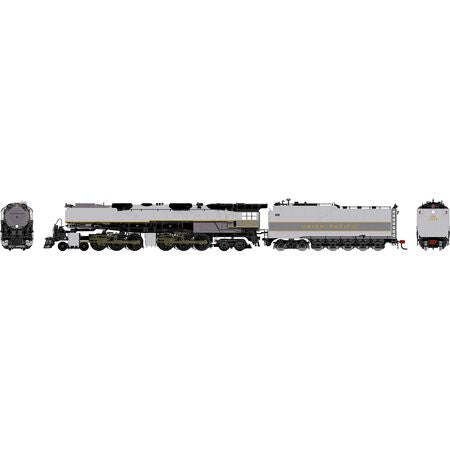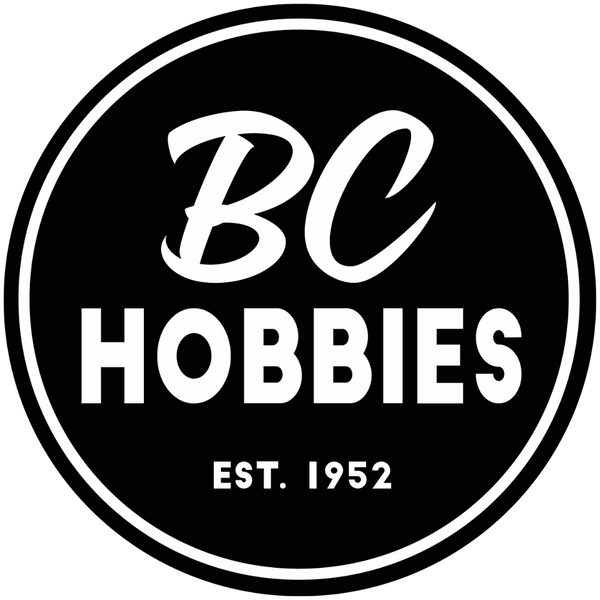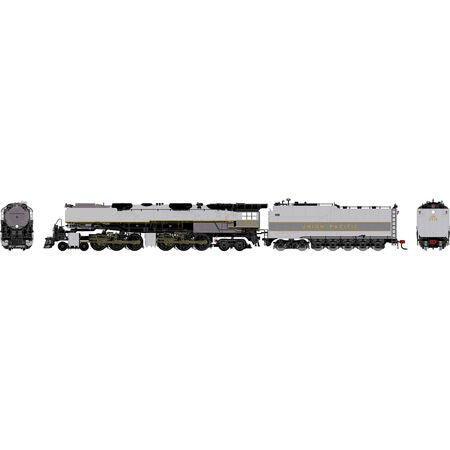Athearn ATH25744 N 4-6-6-4 w/DCC & Sound, UP #3976
Athearn ATH25744 N 4-6-6-4 w/DCC & Sound, UP #3976
Union PacificIn the spring of 1941 UP locomotive designers began working on a locomotive to team up with the new 4-8-8-4 Big Boy's then under construction at Alco. The Big Boy's were designed to pull heavy freights up the Wasatch Range in Utah to the division point at Green River, WY. What was needed was a locomotive to take over at that point that could speed the freights eastward across the Wyoming Division. Building on their experience with the original CSA 4-6-6-4 Challengers UP and Alco's designers developed a newer and better Challenger type locomotive. The result was a group of 65 4-6-6-4 Challenger built in three separate groups during World War II. ROAD NUMBER SPECIFIC FEATURES: #3985Modern Excursion versionOil BurnerEra 1980's - 2000's#3933Coal BurnerDual smoke stackTender bunker coal extensionsEra 1940's - 1959#3967Coal BurnerDual smoke stackSmoke LiftersEra 1940's - 1959#3997Coal BurnerDual smoke stackTender bunker coal extensionsEra 1940's - 1959Union PacificUP painted several of their Challengers in their two-tone grey paint scheme for passenger service. They also added smoke lifters and converted many to oil burners as well. ROAD NUMBER SPECIFIC FEATURES: #3976Two-tone grey w/ yellow lettering and striping. Oil burnerDual smoke stack. Era: Late 1940's - Mid-1950's.STEAM LOCOMOTIVE FEATURES: DCC-ready features Quick Plug™ plug-and-play technologyScaled from prototype resources including drawings, field measurements, photographs, and moreAccurately-painted and –printed paint schemesFull cab interior with boiler backhead with printed gaugesIndividually applied piping, valves, generators, etc.Operating eccentric cranks on both sides operating in correct directionHeadlights and indicator number boxes (number boards) with directional light changeFive pole, skewed armature motor with flywheel for smooth operationPivoting front and rear engines for negotiating 11" radius curvesSee-through running boardsSee-through cab windowsMcHenry® scale knuckle couplersLED Lighting for realistic appearanceFully-assembled and ready-to-runHeavy die-cast frame for greater traction and more pulling powerPackaging securely holds for the model for safe storageMinimum recommended radius: 15"SOUND EQUIPPED MODELS ALSO FEATURETender-mounted DCC decoder with SoundTraxx Tsunami2 soundSound, units operate in both DC and DCCFull DCC functions available when operated in DCC modeEngine, whistle, and bell sounds work in DCAll functions NMRA compatible in DCC modeExcellent Slow speed controlMany functions can be altered via Configuration Value (CV) changesCV chart included in the boxPROTOTYPE SPECIFIC INFORMATIONThe name "Challenger" was given to steam locomotives with a 4-6-6-4 wheel arrangement. This means that they have four wheels in the leading pilot truck, which helps guide the locomotive into curves, two sets of six driving wheels, and finally four trailing wheels, which support the rear of the engine and its massive firebox. Each set of six driving wheels is driven by two steam cylinders. In essence, the result is two engines under one boiler. The Union Pacific Railroad sponsored development of this type to meet the need for higher speeds in main-line service. Historically, articulated locomotives had been limited to slow speeds by factors inherent in their design. The technical breakthroughs achieved with the Big Boy enabled the carrier to develop a newer, improved Challenger that met their speed expectations. Though originally intended for freight service, many Challengers were used in passenger service. Specifications DCCEquippedEra1911-1940, 1941-1970LightedLEDPrototype ManufacturerAmerican Locomotive Company (ALCO)Reporting MarkUPScaleNSoundTsunami2Sub BrandATHEARNWheel Configuration4-6-6-4
Couldn't load pickup availability
Low stock: 1 left
View full details

